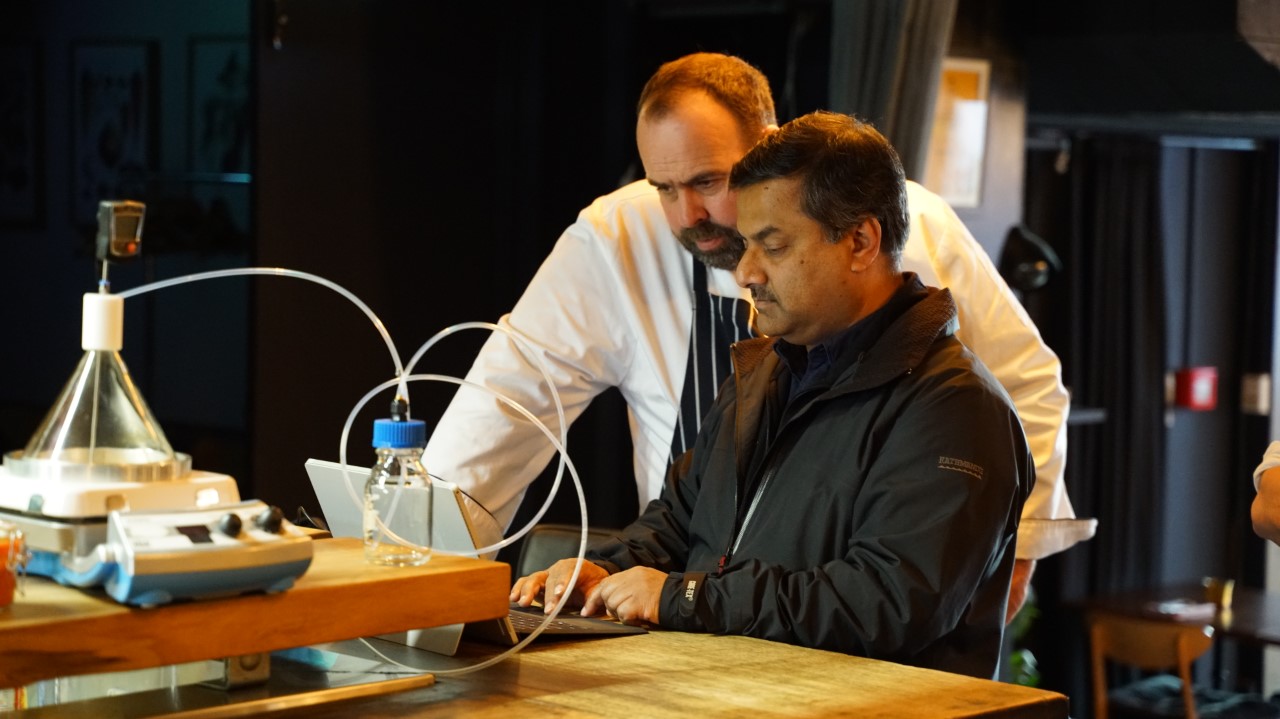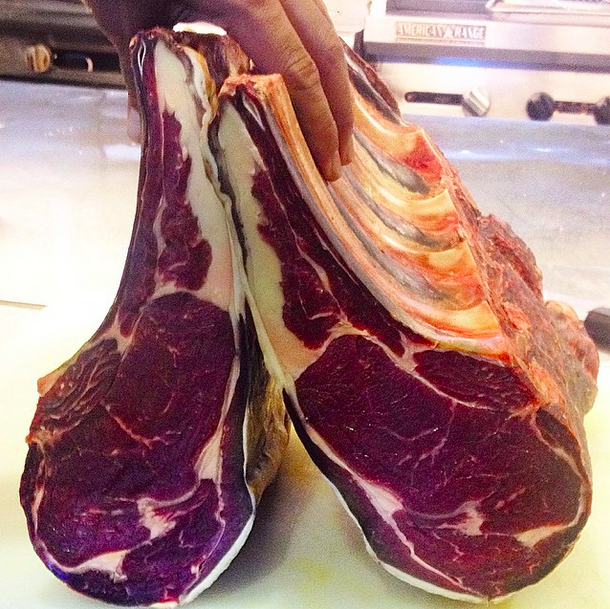



Science helps to cook the "perfect steak"; Artificial Intelligence used to create unique recipes
AgResearch scientists have taken their skills into the kitchen to identify the ideal cooking conditions for the "perfect steak"; while also harnessing the power of Artificial Intelligence (AI) to create new food combinations and recipes.
Working with world-class development chef Dale Bowie, whose career has included working at Heston Blumenthal’s Michelin three-star restaurant The Fat Duck in the UK, the scientists used a unique approach of analysing biochemical changes in beef steak during the cooking process. When being cooked, the steak releases compounds emitted as gases called volatiles, which can be captured and analysed. These volatiles, among other factors such as texture and colour, help determine the eating quality of the steak.
Scientists Santanu Deb-Choudhury and Arvind Subbaraj studied the volatiles produced at a range of different core temperatures from cooking steak using technology called Direct analysis in real time mass spectrometry (DART-MS).
“The results look promising, and there is a clear difference in the volatile profile at different temperatures. This information can help pick the temperature ‘sweet spot’, thus providing a better eating experience,” says Dr Deb-Choudhury.
While the United States Department of Agriculture recommends steaks be cooked at 63°C for a medium (degree of doneness), internal temperature during cooking could range from 45°C (rare) to 80°C (very well done), depending on preference.
“Of seven temperature regimes between 0°C and 72°C, cooking in the range of 58°C to 62°C released flavour compounds that differed in their intensity compared to the other temperature regimes,” says Dr Deb-Choudhury.
“At this temperature range, the muscle fibres in the meat begin to become ‘fork tender’ and yet not releasing their juices completely. Also, the tough connectivetissue collagen begins to weaken, providing succulence to the cooked meat. We identified the balanced formation of flavour chemicals such as esters, providing fruity notes, and other reactive compounds that result in nutty and roasty odour notes. Flavour generation is complex and many factors are at play.”

“Chefs have told us the ideal temperature range we identified has been noted before as producing the best quality steak, but now we can actually prove it scientifically using this form of biochemical analysis. Our study provides a pathway to understand how aroma flavours are generated and the factors that may affect their formation, while providing an optimal balance in the final flavour characteristics of cooked meat.”
Dale Bowie says this kind of science is invaluable to chefs and the food industry.
“Understanding the science of flavour and protein reactions at a molecular level allows chefs to showcase the full potential of meat.”
AI to guide new recipes and food combinations
Beyond the quest to cook the perfect steak, AgResearch scientists have also spent time studying flavour compounds from various foods to identify unique flavours and combinations, including foods indigenous to New Zealand.
With a database of compounds identified and extracted from various foods, this is where the AI comes in, says AgResearch senior data scientist Dr Munir Shah.
“We’ve used the AI to compare the chemical makeup of various foods in our database to identify similarities with other foods, as well as where there are differences in the chemical makeup in foods already established as going well together,” Dr Shah says.
“Using all of this information, we are now able to identify potential new food pairings and recipes with unique flavours. We’ll be getting the input of chefs such as Dale, and diners to test how these new combinations stack up and the potential for further development.”


